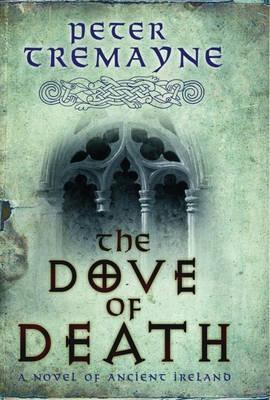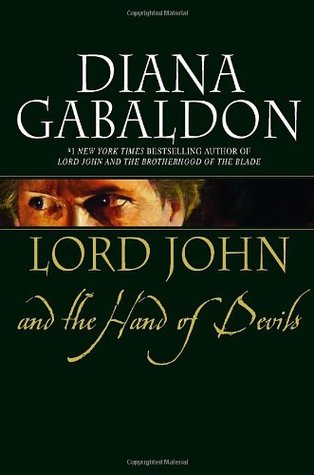I received this book for free from the library in exchange for an honest review. This does not affect my opinion of the book or the content of my review.
Source: the library
The Seventh Trumpet
by
Peter Tremayne
historical mystery in Hardcover edition that was published by Headline Publishing on July 23, 2013 and has 352 pages.
Explore it on Goodreads or Amazon, Barnes & Noble, Kobo
Other books by this author which I have reviewed include Valley of the Shadow, The Dove of Death, The Chalice of Blood, Murder Most Medieval: Noble Tales of Ignoble Demises, Behold a Pale Horse, Atonement of Blood, The Second Death
Twenty-third in the Sister Fidelma historical mystery series set in ancient Ireland with the newly released Fidelma.
My Take
Holy cats! It’s a convoluted story, and it didn’t seem to matter how often I re-read sections. I simply couldn’t grasp all the twists and turns in this. Part of the problem is the ancient Irish names as well as the tangled alliances that run throughout this story. Yet another part is the lack of clues I could follow. Too many great leaps of imagination with little foundation as with Bran Finn and the couple visiting Ailgesach. As if Tremayne knew what was happening and forget to let us in on it, although it could well be that I was overwhelmed, inundated by rumors.
As fascinating as this was, it would have been even more interesting if I hadn’t spent so much time scrambling to figure out what was happening. It definitely was tense with all the questions that are raised about Cashel’s allies! The disguised, the monks who are not, all the secrets awash and swirling throughout, and my own lack of knowledge of the Bible and the seventh trumpet…it was too much.
Fortunately, the individual moments of drama are exciting enough to intrigue. Kidnappings, Prisoner of Zenda-like escapes, chases by river and field, slave rebellion, raiding attacks and battles, and familial plotting.
I also have a quibble about Fidelma being this stupid about the Abbey of Chaemóc. It’s not within her character to not consider the negatives, although it definitely does fit within her arrogance.
I do love this series. It’s a complex relationship between Fidelma and Eadulf, and while I love the strength of Fidelma’s character, I don’t always love her. She can be quite arrogant at times and unfeeling of Eadulf. What truly pulls me in to this series is the equality for women, the culture, and the laws of ancient Ireland — ooh, mama, these laws are so detailed and so strict! And it’s their strictness, the detail to which the laws drill down that makes this land appear so fair. Sure there are things about Ireland I don’t like, but I’m sure I’d find something to dislike anywhere I went (or read!). I suspect that part of my enthrallment is that the culture and laws are so much the antithesis of what I think of today’s Ireland. Especially these days with the IRA and all the stupidness of the religious battles. No, this ancient Ireland is not perfect. It has many of the same problems we experience today with isolated towns ignored, greed, and the desire for power are as at home then as they are today, still, I’d love to see Tremayne’s Ireland return with Irish governance. Ah well…
There’s also the cleanliness! Definitely not what one expects of a time period within what historians have called the Dark Ages! This particular story goes into the hospitals and the rules surrounding them as well as the roads. Heck, we’d be lucky to have a healthcare set-up like this! Certainly better and easier to enroll in than Obamacare!
The Story
No longer a religieuse, Fidelma is at loose ends, having lost her bid for the position she did desire, and Eadulf is angry over her decisions. Luckily, for Fidelma and Eadulf anyway, several suspicious murders distract the inquisitive Fidelma.
Rumors of a band of raiders laying waste to the countryside run rampant, questions are raised as to loyalties, and Fidelma is kidnapped!
The Characters
Lady Fidelma of Cashel is King Colgú‘s sister, a dáilaigh, an advocate of the law, who holds the degree of anruth, the second highest degree in the land. She is also the king’s personal adviser. Brother Eadulf is an Angle and Fidelma’s husband with expertise in medicine. Muirgen is their son’s, Alchú‘s, nursemaid. Aonbharr is Fidelma’s horse.
Gormán is one of the Nasc Niadh, a Warrior of the Golden Collar, one of the elite bodyguards of the Kings of Muman. A man extra blessed for having overcome all that he has. Della is his mother. Enda and Aidan are also of the king’s bodyguards. Caol is the commander of Colgú’s elite bodyguard and one of the best military strategists in Cashel. Dego will escort the bishop back to Imleach and continue with a mission to the Uí Fidgente.
Abbot Ségdae is the Bishop of Imleach, the premier prelate of the kingdom of Muman. Finguine mac Cathail is the tánaiste, the heir apparent, a distant cousin from the Eóghanacht áine branch of the family.
Drón, Lord of Gabrán in Osraige, and his daughter, the dim-witted Dúliath, are arranging a marriage. Ailill is cousin to Fidelma and Colgú and foster son to Drón.
Those associated with Fraigh Dubh
Saer is a woodworker who takes care of the building; Sétna is a woodsman. Brother Ailgesach is a drunkard, having spent too much time at the Glen of Lunatics. Fedach Glas is the tavern/hostel as well as the name of the tavernkeeper. Grella is his wife. Brother Biasta claims to be Ailgesach’s cousin.
Echna is the ferryman; Enán is his son.
Durlus éile
Lady Gelgéis, the Princess of the éile, rules in Durlus éile and should be an ally of Colgú’s. Gobán is a blacksmith and loyal to Gelgéis. Leathlobhair is a leper with good eyesight. Spealáin is the lady’s steward. Diag is her bishop. Tormeid is a warrior of the Uí Duach, former rulers of Osraige.
Bran Finn is the new Prince of the Déisi Muman. The Glen of Lunatics is administered by the abbey of Imleach which cares for those whose minds are unhinged. Lady étain of An Dún is the whacked-out leader of the raiders.
Torna is a wandering bard with some skills, mourning the loss of his beloved Muirne. Sedna is the Chief Brehon at Tara while High King Cenn Faelad is its ruler.
The princes of the the Uí Fidgente are always agitating against Muman. Prince Donennach is their ruler.
Abbey of Chaemóc
The abbey, which is under Tuaim Snámha, Prince of the Osraige, has evolved greatly in a few years and is now led by Abbot Cronán, a.k.a., Lord of the Gleann an Ghuail. Brother Anfudán is its very young steward and Cronán’s nephew. Brother Sillán is his son. Ségnat is a daer-fuidir, a hostage, used as a slave. It also seems to have been the Abbey of Liath Mór, somehow. Now it is Dún Muirne.
Tóla is a farmer who makes a grisly find. Cainnear is his wife. I think Cúu Faoil is the name of his dog. Breac is his son. Brehon áedo is the new Chief Brehon of the kingdom.
A céta is a company of 100 warriors; a cath is a battalion of 3,000. Should more be required, a sluaghadh, a hosting, is called from amongst the people.
The Osraige accept the Kings of Muman as their overlords. Máele Tuile is the King of Laigin; Fianamail is his son. They are preparing to attack Muman despite the bórama fine.
The Cover and Title
The cover has a purplish burgundy background, veined like marble with a Celtic knotwork border on the sides and another framing a square inset depicting a collage of events within the story: a dog, a bloody sword, a stream, and a castle on a hill.
The title is code, for when The Seventh Trumpet is blown, all hell will rain down.















